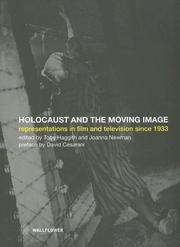| Listing 1 - 3 of 3 |
Sort by
|

ISBN: 9781904764519 9781904764526 1904764517 1904764525 Year: 2005 Publisher: London Wallflower
Abstract | Keywords | Export | Availability | Bookmark
 Loading...
Loading...Choose an application
- Reference Manager
- EndNote
- RefWorks (Direct export to RefWorks)
Book

ISBN: 0857452231 9780857452238 9780857451804 0857451804 Year: 2011 Publisher: New York Oxford
Abstract | Keywords | Export | Availability | Bookmark
 Loading...
Loading...Choose an application
- Reference Manager
- EndNote
- RefWorks (Direct export to RefWorks)
The US invasion of Iraq in 2003 was done mainly, if one is to believe US policy at the time, to liberate the people of Iraq from an oppressive dictator. However, the many protests in London, New York, and other cities imply that the policy of "making the world safe for democracy" was not shared by millions of people in many Western countries. Thinking about this controversy inspired the present volume, which takes a closer look at how society responded to the outbreaks and conclusions of the First and Second World Wars. In order to examine this relationship between the conduct of wars and p
World War, 1914-1918 --- World War, 1939-1945 --- War and society --- Society and war --- War --- Sociology --- Civilians in war --- Sociology, Military --- European War, 1939-1945 --- Second World War, 1939-1945 --- World War 2, 1939-1945 --- World War II, 1939-1945 --- World War Two, 1939-1945 --- WW II (World War, 1939-1945) --- WWII (World War, 1939-1945) --- History, Modern --- European War, 1914-1918 --- First World War, 1914-1918 --- Great War, 1914-1918 --- World War 1, 1914-1918 --- World War I, 1914-1918 --- World War One, 1914-1918 --- WW I (World War, 1914-1918) --- WWI (World War, 1914-1918) --- Influence. --- Social aspects --- History --- Europe --- History, Military --- Social conditions --- Geschichte 1914-1950.
Book

ISBN: 1474425720 1786848392 1474401643 9781474401647 9781474425728 9781474401630 1474401635 9781786848390 Year: 2022 Publisher: Edinburgh
Abstract | Keywords | Export | Availability | Bookmark
 Loading...
Loading...Choose an application
- Reference Manager
- EndNote
- RefWorks (Direct export to RefWorks)
A new exploration of literary and artistic responses to WW1 from 1914 to the presentThis authoritative reference work examines literary and artistic responses to the war’s upheavals across a wide range of media and genres, from poetry to pamphlets, sculpture to television documentary, and requiems to war reporting. Rather than looking at particular forms of artistic expression in isolation and focusing only on the war and inter-war period, the 26 essays collected in this volume approach artistic responses to the war from a wide variety of angles and, where appropriate, pursue their inquiry into the present day. In 6 sections, covering Literature, the Visual Arts, Music, Periodicals and Journalism, Film and Broadcasting, and Publishing and Material Culture, a wide range of original chapters from experts across literature and the arts examine what means and approaches were employed to respond to the shock of war as well as asking such key questions as how and why literary and artistic responses to the war have changed over time, and how far later works of art are responses not only to the war itself, but to earlier cultural production.Key FeaturesOffers new insights into the breadth and depth of artistic responses to WWIEstablishes links and parallels across a wide range of different media and genresEmphasises the development of responses in different fields from 1914 to the present
World War, 1914-1918 --- Arts, British --- Arts and society --- Arts --- Arts and sociology --- Society and the arts --- Sociology and the arts --- History --- Social aspects --- Arts and society. --- Arts, British. --- Art and the war. --- 1900-1999. --- Great Britain. --- World War (1914-1918) --- 1900-1999 --- Anglia --- Angliyah --- Briṭanyah --- England and Wales --- Förenade kungariket --- Grã-Bretanha --- Grande-Bretagne --- Grossbritannien --- Igirisu --- Iso-Britannia --- Marea Britanie --- Nagy-Britannia --- Prydain Fawr --- Royaume-Uni --- Saharātchaʻānāčhak --- Storbritannien --- United Kingdom --- United Kingdom of Great Britain and Ireland --- United Kingdom of Great Britain and Northern Ireland --- Velikobritanii͡ --- Wielka Brytania --- Yhdistynyt kuningaskunta --- Northern Ireland --- Scotland --- Wales
| Listing 1 - 3 of 3 |
Sort by
|

 Search
Search Feedback
Feedback About UniCat
About UniCat  Help
Help News
News